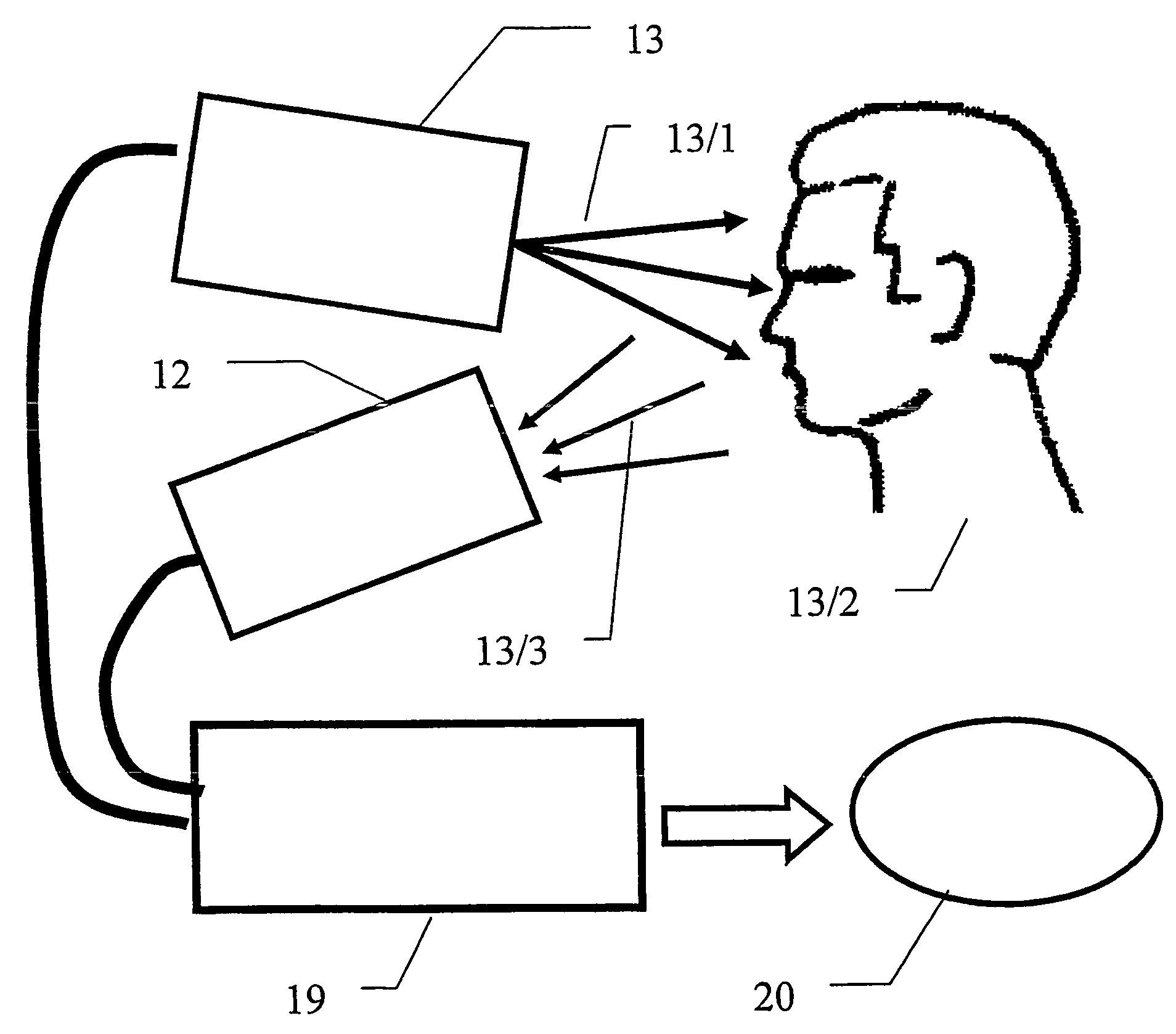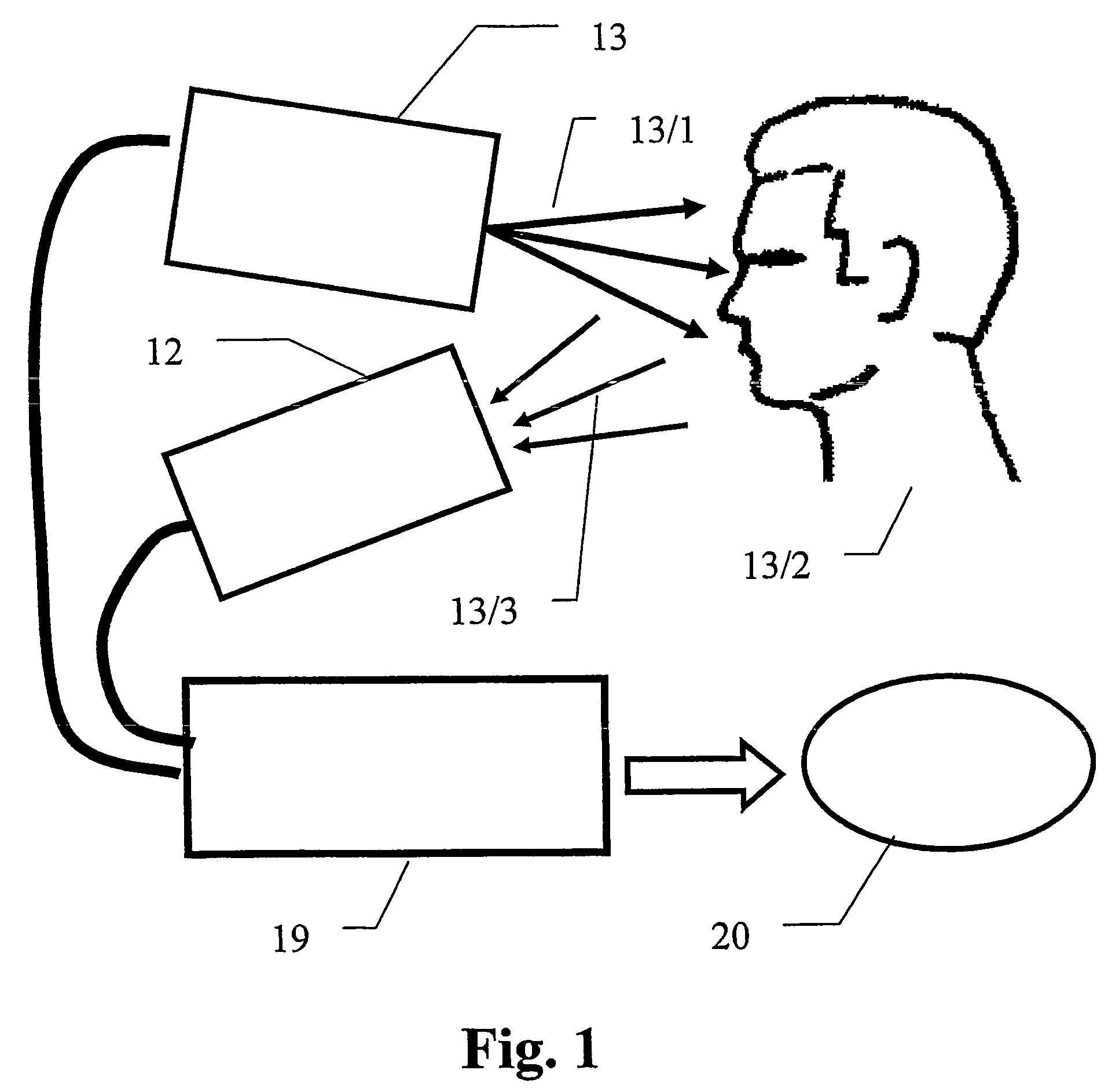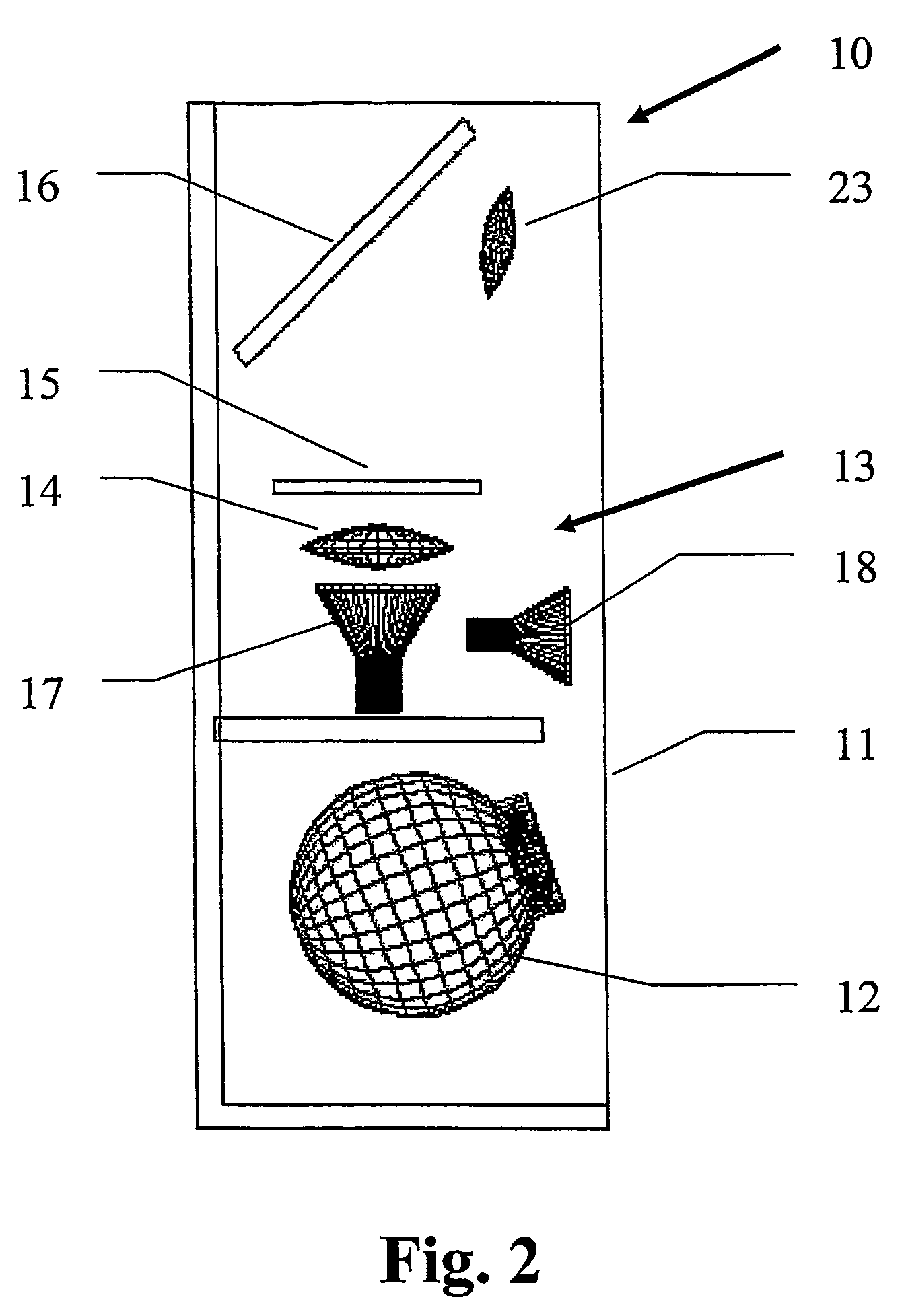Color edge based system and method for determination of 3D surface topology
a 3d object and topology technology, applied in the field of 3d scanning of the surface of a 3d object, can solve the problems of inconvenient and time-consuming processes, no reliable way to distinguish, and the coordinates of the points positioned on this line will be obtained
- Summary
- Abstract
- Description
- Claims
- Application Information
AI Technical Summary
Benefits of technology
Problems solved by technology
Method used
Image
Examples
Embodiment Construction
[0157]FIG. 1 schematically illustrates a general layout and functionality of the present invention. Slide projector 13 irradiates a color edge pattern (the radiation being schematically indicated as 13 / 1) onto a face 13 / 2 of a person. A portion 13 / 3 of the irradiated color light 13 / 1 is reflected from face 13 / 2, and received by an image grabbing apparatus 12, which could be; e.g., a digital video, or still, camera. The grabbed image is forwarded to computer 19, which includes corresponding software for processing the acquired image, for obtaining a 3D True Color Model 20, or 3D representation, of the human face 13 / 2. The 3D True Color Model of the human face relates to points that were derived from a set of points positioned on the surface of the human face, each point being characterized by its {X,Y,Z} coordinates and by its true color attributes. This 3D Model can be used by the software to generate 2D projections, or images, of the human face from different angles and positions.
[...
PUM
 Login to View More
Login to View More Abstract
Description
Claims
Application Information
 Login to View More
Login to View More - R&D
- Intellectual Property
- Life Sciences
- Materials
- Tech Scout
- Unparalleled Data Quality
- Higher Quality Content
- 60% Fewer Hallucinations
Browse by: Latest US Patents, China's latest patents, Technical Efficacy Thesaurus, Application Domain, Technology Topic, Popular Technical Reports.
© 2025 PatSnap. All rights reserved.Legal|Privacy policy|Modern Slavery Act Transparency Statement|Sitemap|About US| Contact US: help@patsnap.com



